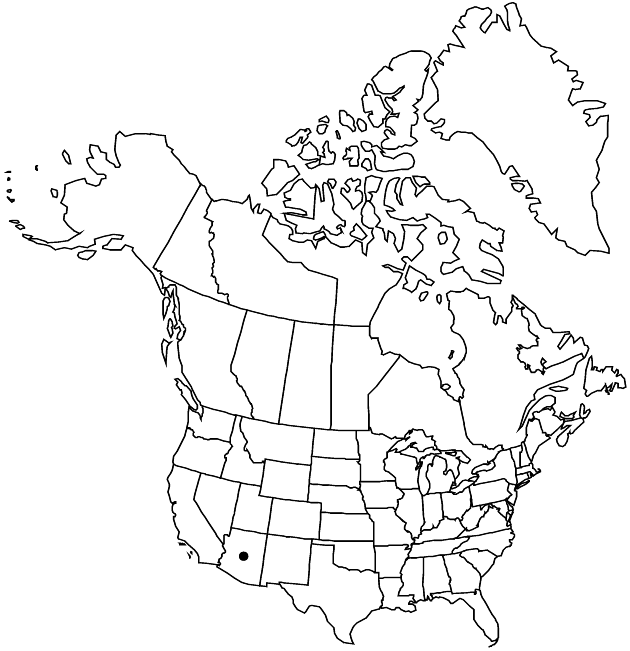Pectis rusbyi
in A. Gray et al., Syn. Fl. N. Amer. 1(2): 361. 1884.
Annuals, 5–50 cm (taprooted); herbage spicy-scented. Stems erect or ascending, glabrous or sparsely puberulent (in decurrent lines). Leaves linear to narrowly elliptic, 10–50 × 1–5 mm, margins with 1–3 pairs of setae, faces glabrous or sparsely puberulent (dotted on margins with round oil-glands 0.2–0.7 mm). Heads borne singly or in open, cymiform arrays. Peduncles 20–80 mm. Involucres campanulate. Phyllaries distinct, oblong or narrowly obovate, 4–7 × 1–2 mm (dotted with 0–2, subterminal oil-glands plus 2–4 pairs of inconspicuous, round to narrowly elliptic, submarginal oil-glands). Ray-florets 8 (–13); corollas 5–11 mm. Disc-florets (7–) 20–55; corollas 3.5–5 mm (2-lipped). Cypselae 3–4.5 mm, strigillose or short-pilose; ray pappi of 1–4, antrorsely barbed awns 1–4 mm or coroniform; disc pappi of 15–30, antrorsely barbed bristles 2.5–5 mm or coroniform. 2n = 24 (as P. palmeri).
Phenology: Flowering Jul–Oct.
Habitat: Deserts, desert grasslands, arid scrub, dry woodlands
Elevation: 600–1600 m
Distribution

Ariz., Mexico (Baja California Sur), Mexico (Sinaloa), Mexico (Sonora)
Discussion
Pectis rusbyi is much less common in Arizona than P. papposa var. papposa, with which it sometimes grows.
Selected References
None.